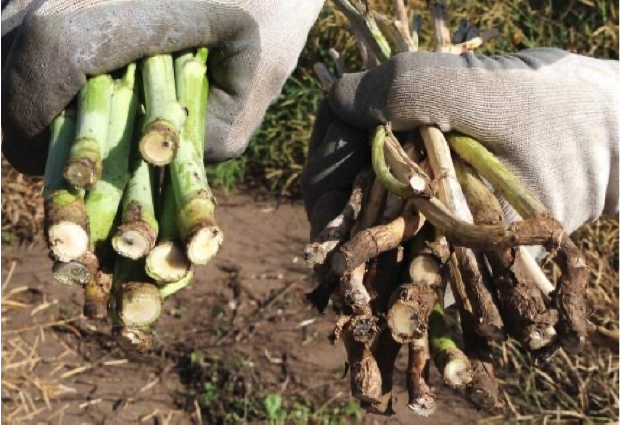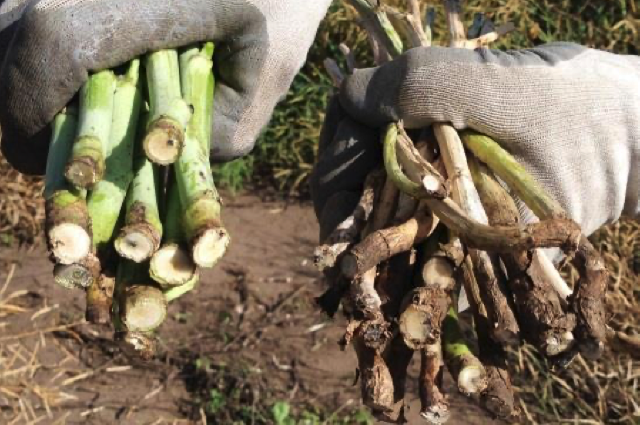BLACKLEG RESISTANCE
THE ISSUE
Blackleg resistance has been available in commercial canola varieties since the early 1990s. A shift towards increasingly virulent strains of the blackleg fungus has resulted in the breakdown of resistance in many traditional canola varieties. Increasing canola acreage and shortened rotations have contributed to this.
UNDERSTANDING RESISTANCE
Not all R-rated varieties provide the same level of blackleg protection and an R-rating does not mean the variety is immune to blackleg or resistant in all geographies. An R-rating of an older variety was established against blackleg strains that may no longer be prevalent, whereas newer R-rated hybrids have been tested against current strains of the fungus and provide good protection against blackleg in the majority of locations. Numerical ratings are not a preferred indicator of resistance as they are derived from performance at specific locations against specific blackleg strains in specific years and may not reflect how the variety performs across a range of geographies.
There are two types of resistance genetics for combatting blackleg disease:
- Quantitative resistance – complex of multiple minor genes, each with a small impact. Plants with quantitative resistance may still get infected, but they have the ability to slow down the progression of the disease and thereby reduce its severity.
- Qualitative resistance – a more specific form of resistance where plants with a particular R gene respond to a particular strain of blackleg. If that strain of blackleg changes or evolves, the R gene no longer triggers the required plant defense.
Multigenic resistance simply refers to more than one resistance gene. All varieties sold in Western Canada rely on multiple genes for blackleg resistance. What differentiates the level of protection is the particular combination of resistance genes which determine how a variety performs across a range of environments and against a range of blackleg strains.

R&D EFFORTS Plant breeders areinaraceto stay ahead of blackleg by incorporating more effective resistance genes into canola hybrids. The challenge is to identify effective R genes that work well against the current predominant blackleg strains. The best and most durable blackleg resistance is derived from a combination of both solid quantitative resistance plus strategic use of effective major R gene resistance.
- Coreen Franke, R&D Pathology Research
THE DYNA-GRO SOLUTION
Dyna-Gro varieties are tested thoroughly across Western Canada and Spring Canola growing areas in the United States. The current Dyna-Gro line-up offers outstanding blackleg resistance with R-rated disease scores. DG 533 G has consistently demonstrated exceptional blackleg resistance effective against current prevalent strains of the fungus. The next generation of hybrids from Dyna- Gro Seed, including new DG 540 G, offer world- class protection with our continued evolution of blackleg resistance genetics.
© Copyright 2018, NutrienTM. This information may have been accumulated from publicly available sources outside of Dyna-Gro Seeds, or its affiliates. Individual results may vary, and performance may vary from location to location and from year to year. This result may not be an indicator of results you may obtain as local growing, soil and weather conditions may vary. Dyna-Gro® is a registered trademark of Loveland Products, Inc. Featured logos are service/trademarks of their respective owners.

